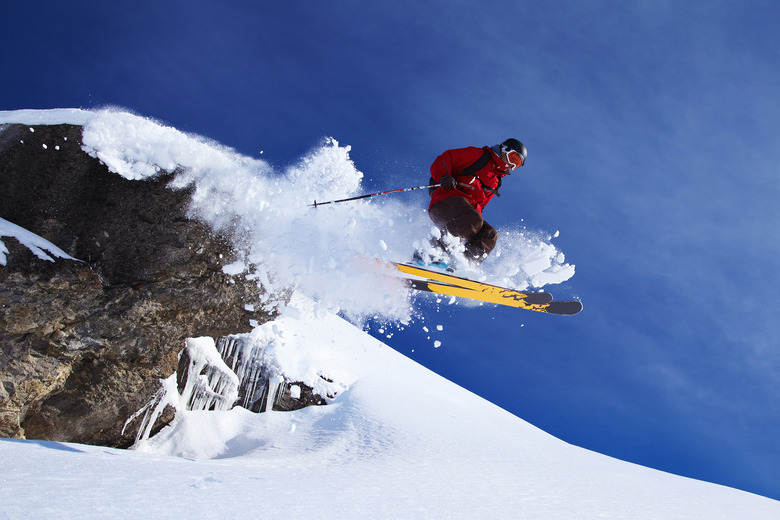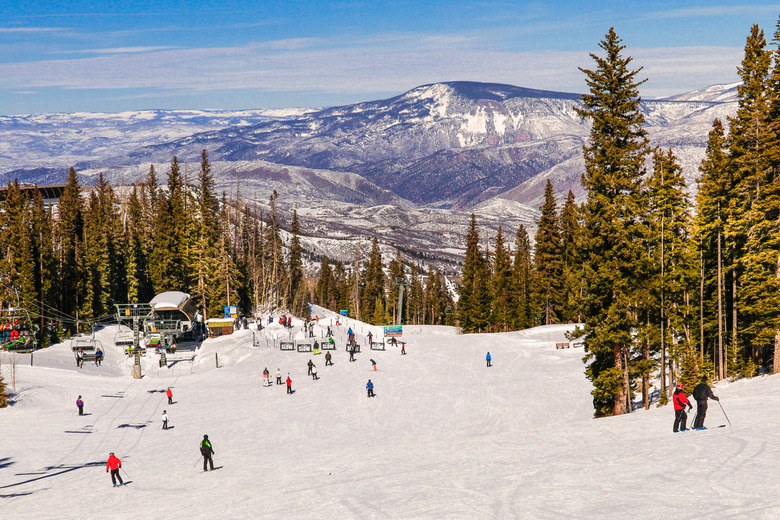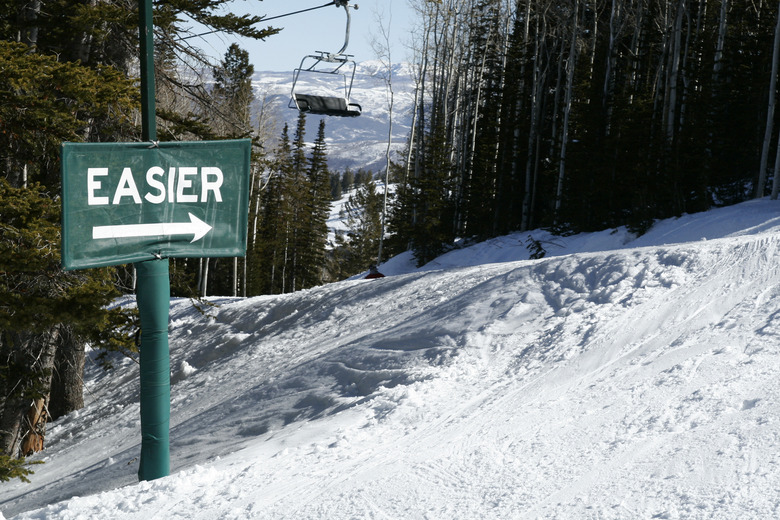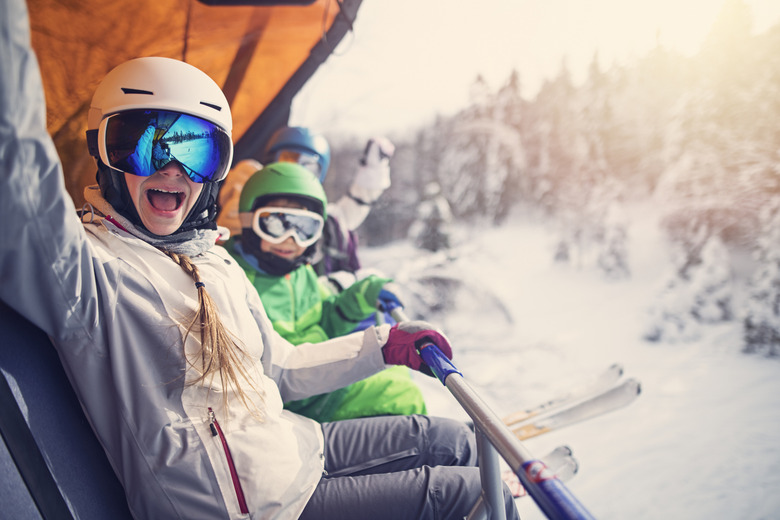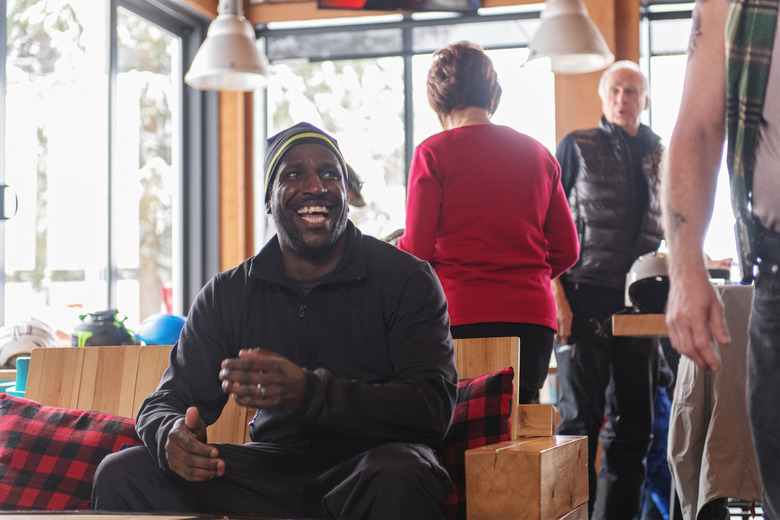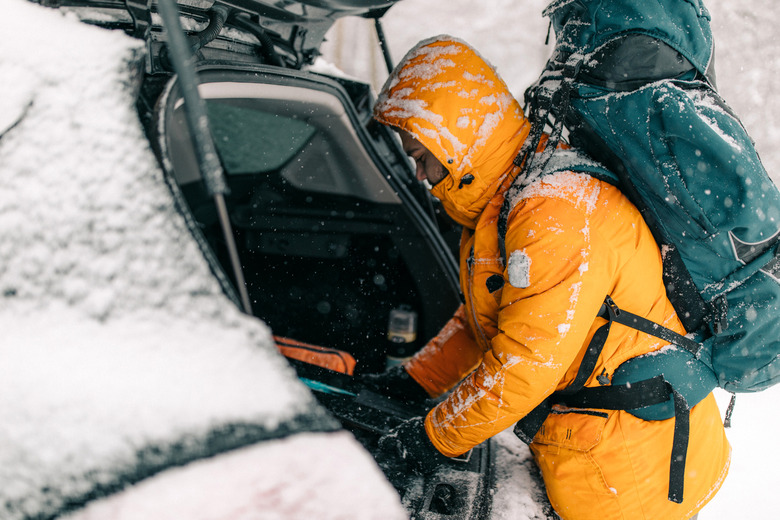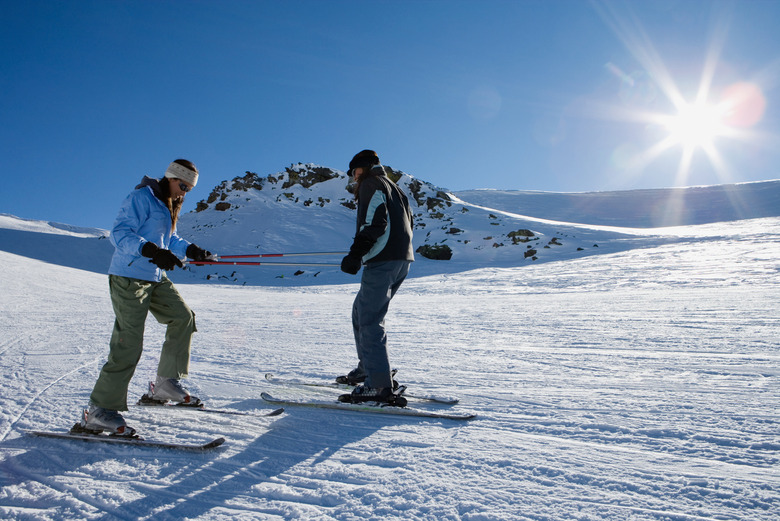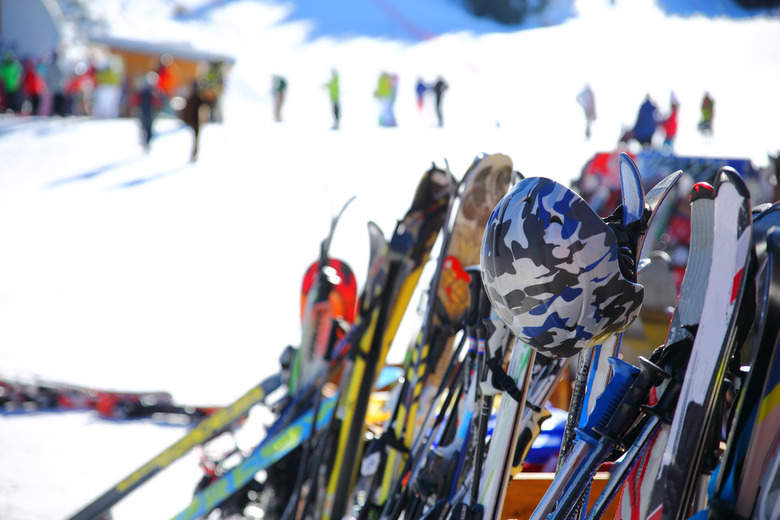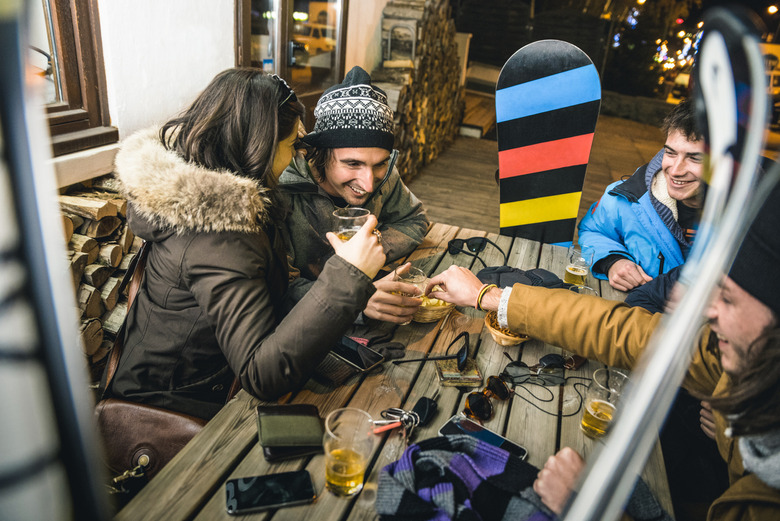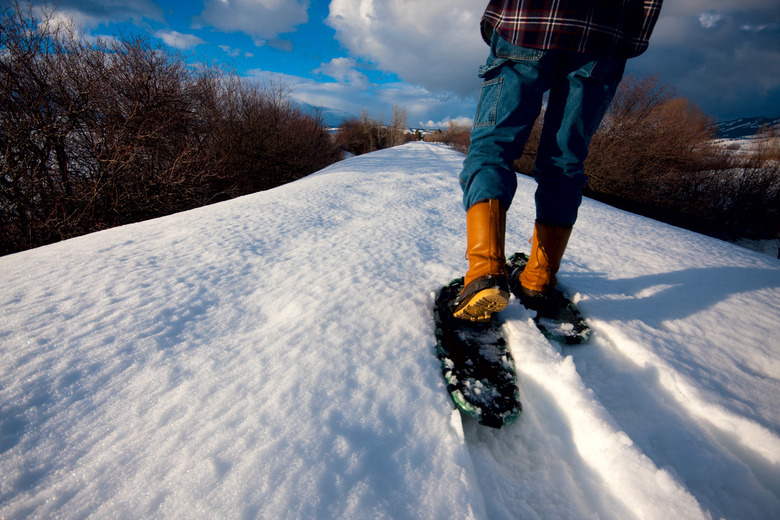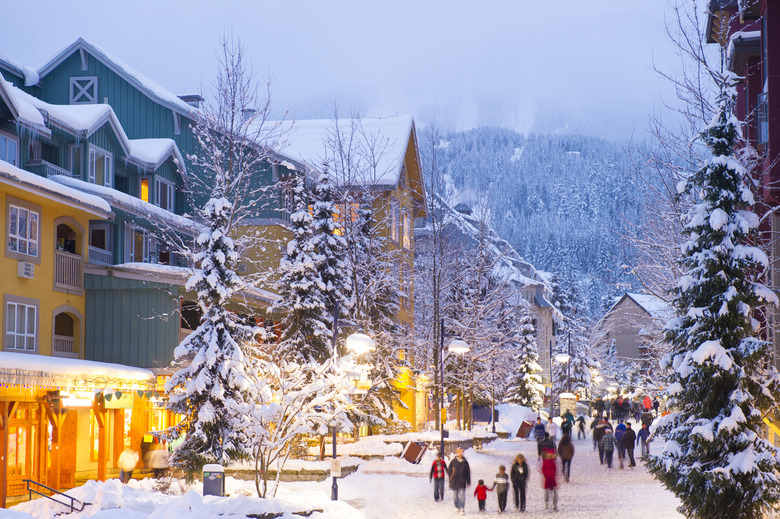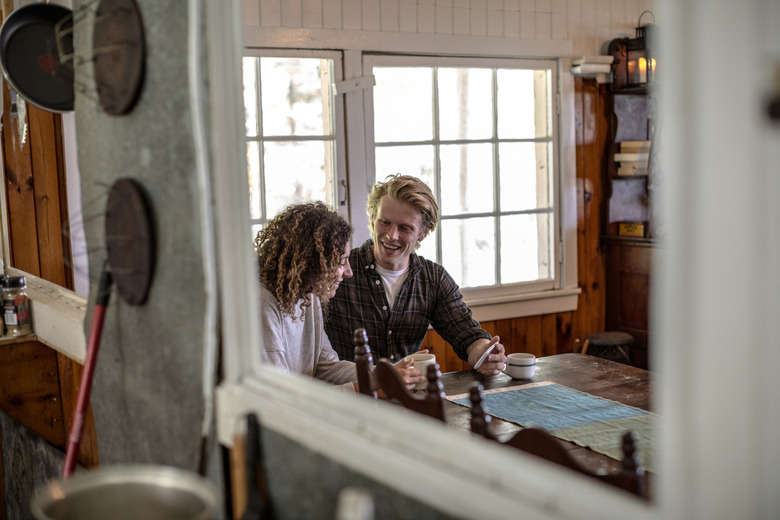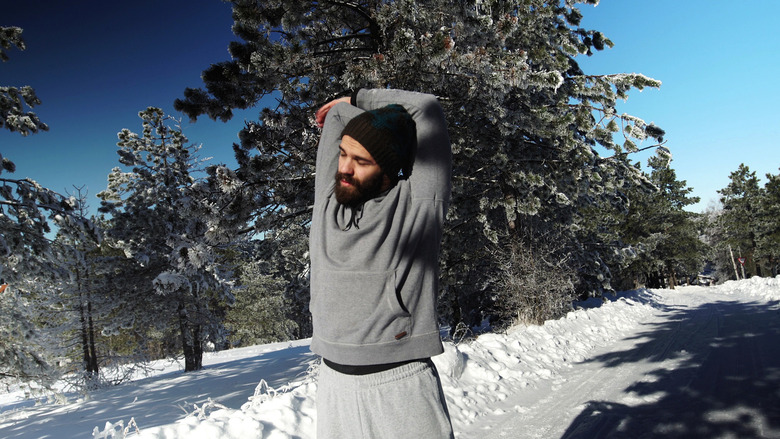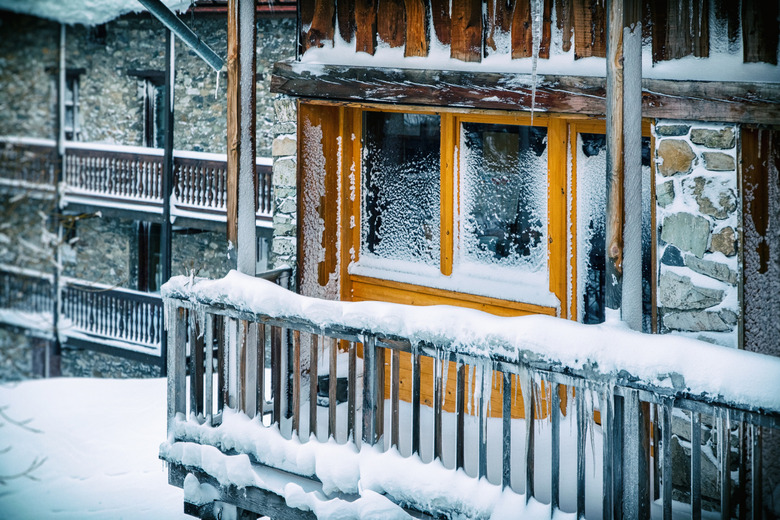A Guide To Planning The Perfect Ski Trip
Ever since Idaho's Sun Valley opened as the first destination ski resort in the United States in 1936, skiing has grown as a popular American vacation across the country. Whether you're a thrill-seeker or want to enjoy the ambiance of a winter wonderland without stepping foot in the snow, a ski trip could be the perfect winter vacation for you. If you're considering hitting the slopes, here's what you need to know to plan the ski vacation of your dreams.
Pick the right time of year
If you have a specific time of year in mind for your vacation, do some research to choose a destination where the skiing conditions are favorable then. If you're more flexible on dates, then it might be wise to consider mountains that reliably get early- (November) or late-season (mid-March) snowfall. You can find discounts on lodging and rentals at off-peak times. If money matters less than perfect powder, peak season (December-February) is for you.
Assess your skill level
One way to help choose your perfect ski destination is to consider the overall difficulty level of the mountain. While most resorts have a variety of runs for different experience levels, there are some destinations that especially cater to novices with dedicated beginner's zones, many spacious, shallow green and blue runs and world-class instruction programs. If you have more experience and are looking for a challenge, consider resorts with tougher, steeper slopes.
Buy lift tickets early
Skiing might seem too expensive, but it's possible to plan an affordable getaway. Savvy skiers can find discounts on lift tickets, which are often already reduced in price for children and seniors. While the most expensive one-day lift ticket at a ski resort in 2018 was Aspen Snowmass at $169, the average price of a peak-season one-day adult lift ticket in the United States was $94, according to ski magazine Snow-Online.com. Avoid paying the walk-up price for lift tickets by pre‐purchasing online or snagging deals like discounted multi-day tickets. Loyalty programs from resorts or bundles with lodging are also ways to save.
Compare accommodations
There's more than just price that will determine where you should stay on your ideal ski vacation. Convenience and amenities are the main reason travelers choose to stay at ski resorts. What do you want to do after the lifts shut down for the day? If your dream ski vacation includes pampering yourself at a luxury spa, lounging in a heated pool or socializing at a swanky cocktail party, then a resort experience might be for you. In comparison, rentals and cabins may offer more affordable prices as well as more privacy and more quality time with friends and family.
Enjoy apres-ski amenities
If you're paying for included apres-ski amenities at a rental, hotel or resort, make sure to allow yourself time to take advantage of them. Take a dip in the hot tub, light a fire in the fireplace or roast marshmallows over a fire pit.
Get to the mountain
Navigating mountainous terrain through winter weather can be stressful if you're driving to your ski vacation. Make sure your car is prepared for ice and snowy road conditions, and look into your parking options at your destination. Many popular ski destinations can be reached by plane but the prices at smaller, regional airports can be high. Alternative options include taking shuttles from larger airports, buses and trains, which all have their pros and cons.
Reserve airfare
If you're opting to fly to your ski vacation, book earlier rather than later, especially if you're flying into a smaller, regional airport or traveling during the holiday season. Popular resorts — and the airplanes flying to them — can fill up months in advance. Some can get completely booked six months out.
Find a ski school
If you're going to ski for the first time, it's been years since you last skied or you're looking to brush up on or improve your technique, it's probably worth it to invest in skiing lessons. Most programs offer a variety of classes at different lengths and price points, including group lessons, private lessons, private family lessons and adaptive lessons that are half-, full- or multi-day classes. Lessons are an efficient way to learn in which you'll get specific feedback and coaching from professionals. Just make sure you research reputable instructors before you book.
Bring or rent the right equipment
Skiing requires quite a bit of equipment, so before your trip, make a checklist of all the items you'll need to pack or rent upon your arrival to the mountain. If you're bringing your own skis, poles and boots, check out your storage situation and transportation options to and from the slopes. If you're renting, which you should do if it's your first ski trip, compare prices between ski outfitters and resorts. Many places will also rent out ski jackets, goggles and more, which could be a more cost-effective option depending on how often you go skiing.
Budget for higher prices
Real estate in American ski towns fetches some of the highest average prices in the country and their remote mountain locations create charm but also limit access to outside resources. This means dining and shopping in ski towns often come at prices as steep as the slopes. If you'd like to enjoy a romantic dinner or warm up at a local coffee shop or brewery on your ski trip, make sure to budget extra money as well as extra time to journey off the mountain.
Try other outdoor activities
You have more than just the two options of skiing or relaxing on your ski vacation. Mix things up while still enjoying playing in the snow by trying out other winter outdoor activities. Snowboarding, snowshoeing, inner tubing, sledding and tobogganing are prevalent options at many resorts. For the adventurous, certain resorts offer more challenging, niche activities like ice climbing, snowbiking or snowmobiling.
Hit the town
Heading into the small mountain town near your cabin or resort is not just a good way to stretch your legs and stock up on supplies. Many ski towns include world-class restaurants, breweries, distilleries, museums, art galleries and more. Take a break from the slopes to enjoy the culture, history and whatever else the town has to offer.
Resist over-planning
While having plans in place can make your vacation run smoothly, make sure to leave room for relaxation and spontaneity. It might be nice to not have dinner reservations in the evening in case you'd rather have one last run or spend a simple night curled up by the fire.
Stay healthy
Skiing is a physically demanding activity, and your body might not feel the effects until after you spend all day frolicking in the snow. Make sure to fuel your body for the day's workout and bring snacks along with you. Wear sunscreen, drink water, stay warm and remember to stretch at the end of the day. You don't want to overexert yourself the first day and be too sore for day two. Consider increasing your cardio, core and lower body exercises in the months leading up to your trip to increase your endurance.
Check the weather forecast
Weather in mountain areas can be unpredictable, so about a week ahead of your trip, start keeping an eye on temperatures and skiing conditions at your destination. Make contingency plans if the weather chooses not to cooperate. Resorts will close trails or portions of a mountain if there's not adequate snow coverage or if a winter storm dumps too much snow. Adverse weather such as high winds or whiteout snow will also lead to closures. If you need a reprieve from grueling winter weather, consider these top warm-weather destinations to spend the holidays.
